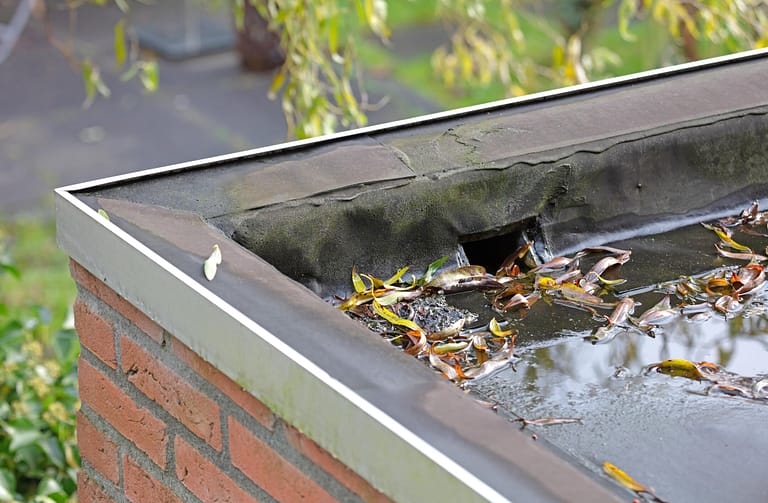
Roof overhangs might seem like a small detail in home construction but they play a crucial role in protecting your home and enhancing its aesthetic appeal. For homeowners looking to make informed decisions about their roofing, understanding the different types of roof overhangs and their benefits is essential. In this blog post, we will explore various types of roof overhangs, their unique advantages, and more, including:
- What is a Roof Overhang?
- 6 Types of Roof Overhangs
- Choosing the Right Overhang for Your Climate
- The Impact of Roof Overhangs on Energy Efficiency
- Aesthetic Considerations
- Maintenance Tips for Roof Overhangs
- Common Mistakes to Avoid
🤔 What is a Roof Overhang?
A roof overhang refers to the portion of the roof that extends beyond the exterior wall of a building. This architectural feature is designed not only for aesthetics but also for practicality. By directing rainwater away from the walls and foundation, roof overhangs play a crucial role in preventing water damage that can lead to mold, rot, and structural issues over time. Beyond their protective function, roof overhangs can enhance the visual appeal of a home, adding depth and character to its design. Whether it’s a slight extension or a dramatic eave, the overhang can contribute to the overall style, complementing various architectural themes.
Importance of Roof Overhangs

Roof overhangs are essential for several reasons, offering a range of benefits that contribute to the longevity and aesthetics of your home. Here are some key advantages:
- Protection from Rain: They act as a barrier, preventing water from saturating exterior walls and causing damage, especially in areas prone to heavy rainfall.
- Erosion Control: Roof overhangs channel water away from the foundation, helping to reduce erosion and maintain structural integrity.
- Moisture Prevention: By keeping basements and crawl spaces dry, they help prevent moisture buildup, reducing the risk of mold growth and improving indoor air quality.
- Energy Efficiency: By shading windows from direct sunlight, they reduce solar heat gain, keeping indoor spaces cooler and potentially lowering energy bills.
Overall, the role of roof overhangs is multifaceted, encompassing protection, energy efficiency, and visual appeal, making them a valuable feature in any building design.
Types of Roof Overhang Materials
The materials used for roof overhangs can vary greatly, depending on the style and needs of the home. Common materials include wood, metal, and vinyl. Each material has its own set of advantages:
- Wood offers a classic look and can be easily painted or stained.
- Metal is durable and requires less maintenance.
- Vinyl is cost-effective and resistant to moisture and rot.
🏠 6 Types of Roof Overhangs
Understanding the different types of roof overhangs can help you select the right one for your home. Here are the most common types:
1. Eave Overhang
Eave overhangs are the sections of the roof that extend out horizontally from the edge. These extensions play a crucial role in protecting the walls and foundation of a building from rain and snow. By deflecting water away from the structure, eave overhangs help prevent moisture-related issues like mold and rot, ultimately enhancing the longevity of the building. Additionally, they provide shade during the hot summer months, which can significantly help reduce cooling costs and improve indoor comfort.
2. Rake Overhang
Rake overhangs run along the slope of the roof, covering the gable ends. Similar to eave overhangs, they serve to prevent water from running down the walls and into the foundation. Their primary benefit lies in their ability to shield against wind-driven rain, which can be particularly aggressive in certain climates. By directing water away from vulnerable areas, rake overhangs help maintain the structural integrity of the roof and reduce the risk of water damage. They also contribute to the visual appeal of the home, enhancing its architectural design.
3. Hip Overhang
Hip overhangs extend from the corners of hip roofs, providing protective coverage similar to that of eave overhangs. These overhangs are beneficial because they help channel water away from the walls, reducing the likelihood of leaks and water damage. Additionally, hip overhangs can improve ventilation in the attic space, which is essential for regulating temperature and preventing moisture buildup. This can lead to better energy efficiency in the home and a more comfortable living environment.
4. Dormer Overhang
Dormer overhangs are found on dormer windows that protrude from the roofline, adding both function and style. They play a vital role in protecting the dormer window from rain and snow, preventing water intrusion that could lead to rot and decay. Beyond their protective function, dormer overhangs enhance the architectural interest of a building, providing visual dimension and depth. They can also help to increase natural light and airflow into the upper levels of a home.
5. Shed Overhang
Shed overhangs are typically found on shed roofs and extend from one side of the structure. These overhangs are particularly useful for providing shade and creating a comfortable entrance area that is protected from the elements. By keeping the doorway dry, they help prevent water from entering the shed, which is essential for safeguarding tools and equipment. Additionally, shed overhangs can enhance the aesthetic appeal of the shed, making it a more attractive addition to the landscape.
6. Balcony Overhang
Balcony overhangs extend from the main structure to provide shade and shelter for outdoor spaces. They offer significant benefits by enhancing the usability of balconies, allowing residents to enjoy these spaces even during light rain or intense sun. By protecting balcony furniture and flooring from the elements, these overhangs help maintain the quality and longevity of outdoor furnishings. Furthermore, they can contribute to energy efficiency by reducing heat gain in adjacent rooms, ensuring a more comfortable indoor climate.
💡 Additional Considerations To Choose the Right Overhang For Your Roof

Choosing the right overhang for your roof is crucial as it affects your home’s energy efficiency, protecting against sun exposure and rain. A well-designed overhang can help regulate indoor temperatures and prevent water damage, ultimately enhancing the longevity of your roof and overall structure.
Choosing the Right Overhang for Your Climate
Your local climate plays a significant role in determining the best type of roof overhang for your home. In areas with heavy rainfall, longer overhangs can provide better protection against water damage by directing rainwater away from the foundation and preventing leaks. Conversely, in hotter climates, wider overhangs can offer more shade, reducing heat buildup and helping keep your home cooler by minimizing the sun’s direct impact on the roof and walls.
The Impact of Roof Overhangs on Energy Efficiency
Roof overhangs can significantly impact your home’s energy efficiency by shading windows and reducing the amount of direct sunlight that enters your living spaces. This shading effect is especially crucial during the summer months, as it can help lower cooling costs by limiting the need for air conditioning. Furthermore, properly designed overhangs can optimize natural light during the winter, allowing sunlight to warm your home while still minimizing overheating during warmer months, making them a smart investment for year-round comfort.
Aesthetic Considerations
Beyond their functional benefits, roof overhangs also contribute to the overall aesthetic appeal of your home. The style, size, and material of the overhang should complement the architecture of your home, ensuring a harmonious design. A well-designed overhang can enhance curb appeal, making your property more inviting and visually appealing. Thoughtfully chosen overhangs can also add architectural interest, giving your home character and potentially increasing its market value, making them both a practical and stylish choice.
🔎 Maintenance Tips for Roof Overhangs

Regular maintenance is essential to ensure the longevity and effectiveness of your roof overhangs. Here are some additional tips to keep them in top condition:
- Inspect regularly for signs of damage, such as cracks or rot.
- Keep gutters and downspouts clean to prevent water buildup.
- Repaint or restain wooden overhangs as needed to protect against moisture.
- Ensure proper ventilation in the attic to minimize heat and moisture buildup.
- Trim overhanging branches to prevent wear and tear from falling debris.
- Check for insect infestations, especially in wooden structures, and address them promptly.
- Consider adding insulation to improve energy efficiency and protect against ice dams in colder climates.
🚫 Common Mistakes to Avoid
When installing or maintaining roof overhangs, it’s important to avoid common mistakes that can compromise their effectiveness. These include:
- Neglecting to consider the local climate.
- Using low-quality materials that are prone to damage.
- Failing to properly maintain and inspect the overhangs regularly.
🙌 Expert Installation and Quality Craftsmanship
When it comes to selecting and installing the right roof overhang for your home, trust the experts at Shingle and Metal Roofs. Our team is dedicated to providing high-quality craftsmanship, industry-leading warranties, and exceptional customer service. Whether you’re looking to install new overhangs or need maintenance for existing ones, we have the skills and experience to get the job done right.
For more information or to schedule a consultation, contact us today. Our team is ready to help you enhance your home’s protection and aesthetic appeal with the perfect roof overhang solution.






